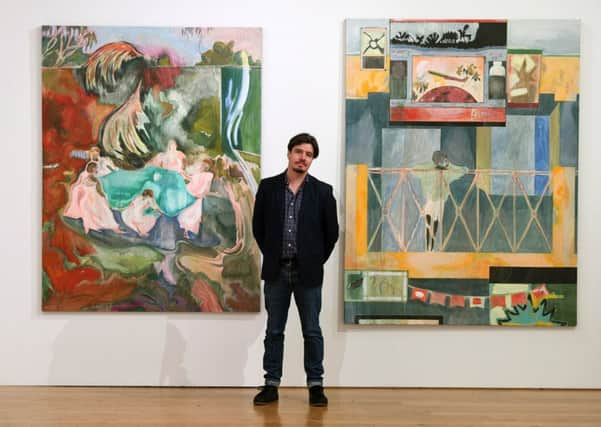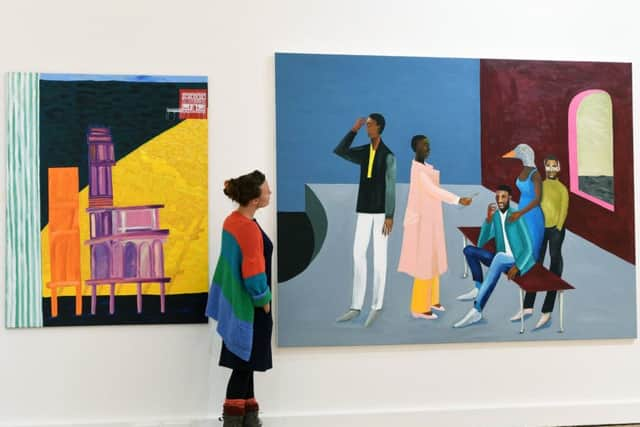Why new Leeds Art Gallery exhibition Slow Painting aims to get visitors spending longer with art


There’s a lot to be said for visiting galleries and museums. In an increasingly frenetic world, spending time in front of paintings and sculptures can be both inspiring and meditative.
It also allows us to disconnect from our phones and computers and simply stop and pause, and reflect.
Advertisement
Hide AdAdvertisement
Hide AdIt’s something the Leeds gallery’s new exhibition, on tour from the Southbank Centre’s Hayward Gallery, taps into. Slow Painting features 19, mostly modern, artists whose work covers a variety of styles, from Gareth Cadwallader, whose small, detailed paintings combine elements of portraiture, still life and landscape, to Yelena Popova’s abstract and geometric work.


The exhibition is curated by the writer and critic Martin Herbert who feels our increasing reliance on the digital world has affected the amount of time we spend engaging with art.
This sprang to mind when he was invited to come up with a concept for a painting exhibition. “The idea is to look at what ‘slowness’ might mean in relation to painting – and looking at painting – today, and not limit that to paintings that take a long time to make,” he says. “So while there are paintings in the show that are meticulous and intricately composed, there are also works that are, I hope, intriguingly open-ended and reward extended viewing and thinking about.”
Advertisement
Hide AdAdvertisement
Hide AdMost of the paintings in the exhibition are from the last few years, though there are a handful of works from the mid-90s, and the focus is on artists from this country. “I’ve seen a lot of international painting that is ‘fast’, often quickly made and easily consumed, and not satisfying. So I wanted to include works that were the opposite of that, and I could think of plenty of British or UK-based painters that could be included.”
The exhibition’s title is a cue for viewers to spend a bit longer with a work of art. “The average time spent in front of artworks now is just a few seconds – and to experience what it’s like for a work of art to change, reveal more of itself, as you look at it.”
This is a miniscule amount of time, especially when you consider the toil and effort that goes into making a drawing or painting. So do we still appreciate art in the way we used to? “I think so, I certainly hope so,” says Martin. “It’s much easier to be distracted nowadays when you’ve got a smartphone right there in your pocket, offering simple gratifications. I’m interested in the idea of art as a place where your attention span could potentially grow again, whereas technology seems to be reducing it.”
Advertisement
Hide AdAdvertisement
Hide AdHe believes, too, that artists today do still have something important to say.
“I think artists have always aimed to capture the mood of reality, what it feels like to be alive at this moment, and they continue to do that even as reality is increasingly technological. But that doesn’t mean the work always has to be about technology. Sometimes it can be a space of contrast.
“Plus I think one virtue of art is that rather than being prescriptive, it’s a space where the viewer can bring something of themselves – their own interpretation to it. So much else in the world tells you what to think. Art often doesn’t, it allows the viewer’s own creativity and subjective thought into the equation. Also I don’t feel like art is being marginalised. The audience for contemporary art, by all accounts, is bigger than ever.”
It certainly feels that way. In 2017, the David Hockney retrospective became Tate Britain’s most popular show, and this summer Yorkshire Sculpture International saw 1.4 million people interact with large scale works by Damien Hirst and others on public display in Leeds and Wakefield.
Advertisement
Hide AdAdvertisement
Hide Ad“These days I think it’s important that we remember how to take time to appreciate things in general, as opposed to quick-hit gratification, and the more time you give to art, often the more you get out of it,” says Martin.
On a cold, inclement day like this, it can warm both mind and body.
Slow Painting, Leeds Art Gallery, runs until January 12.